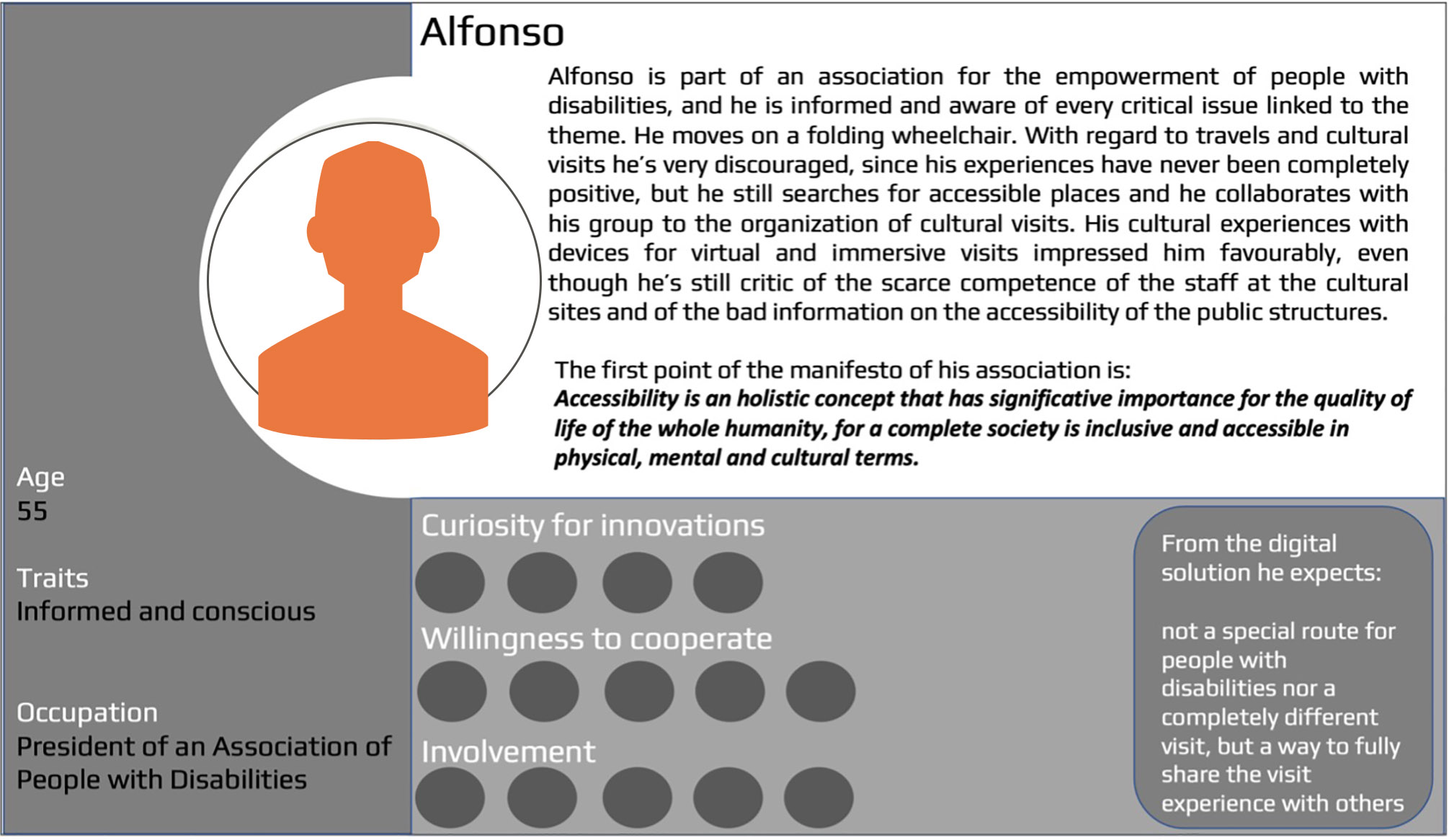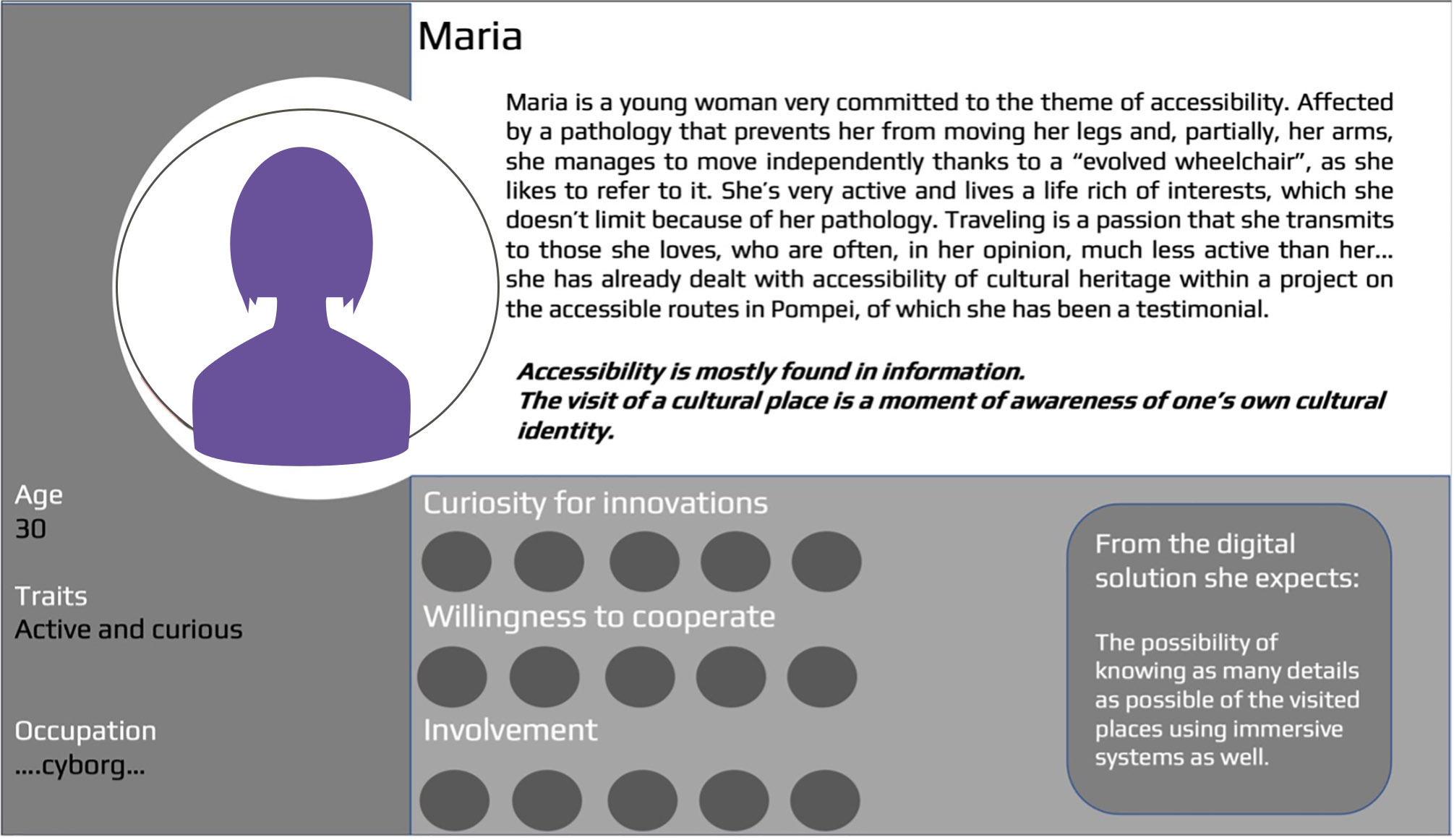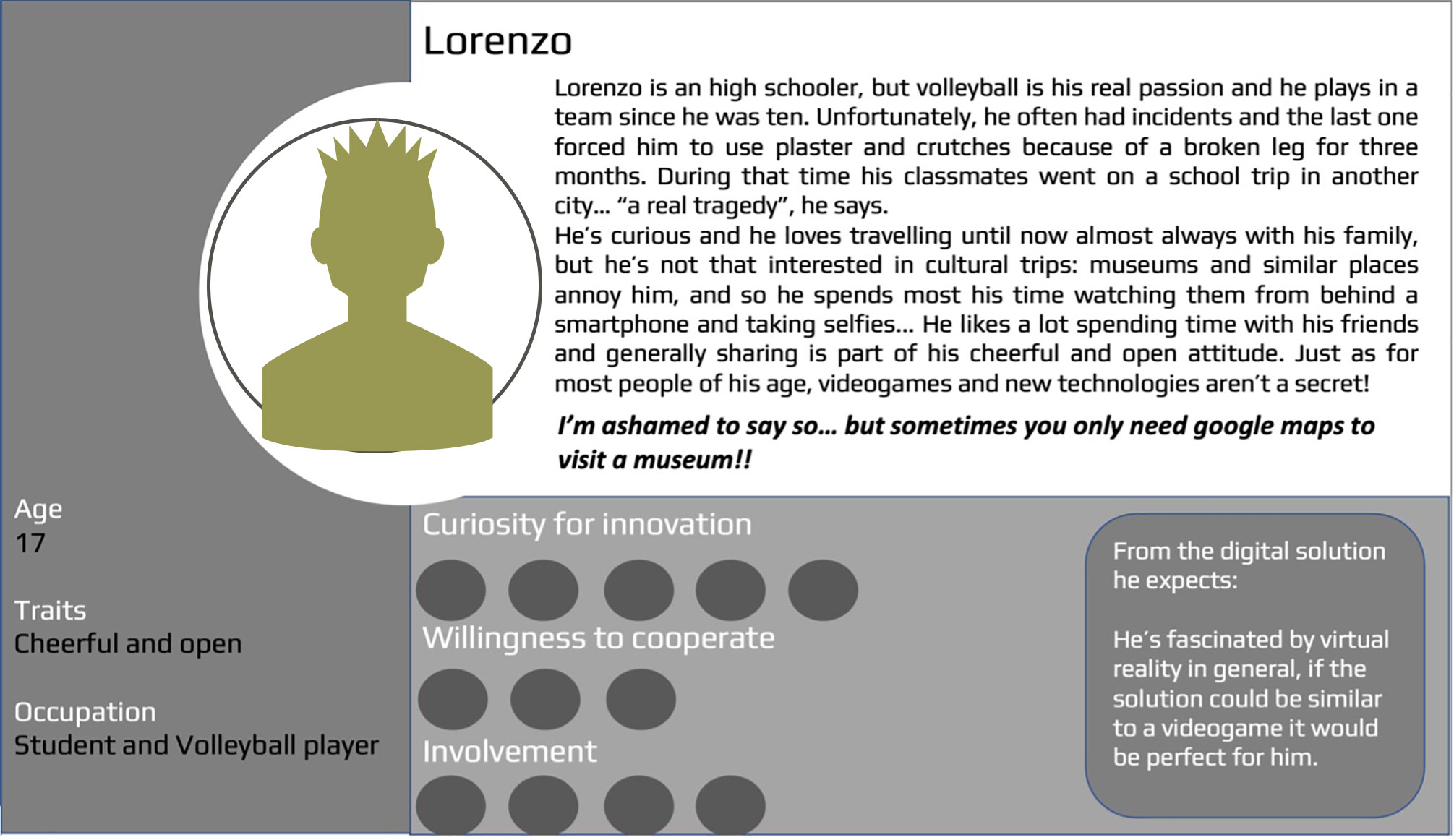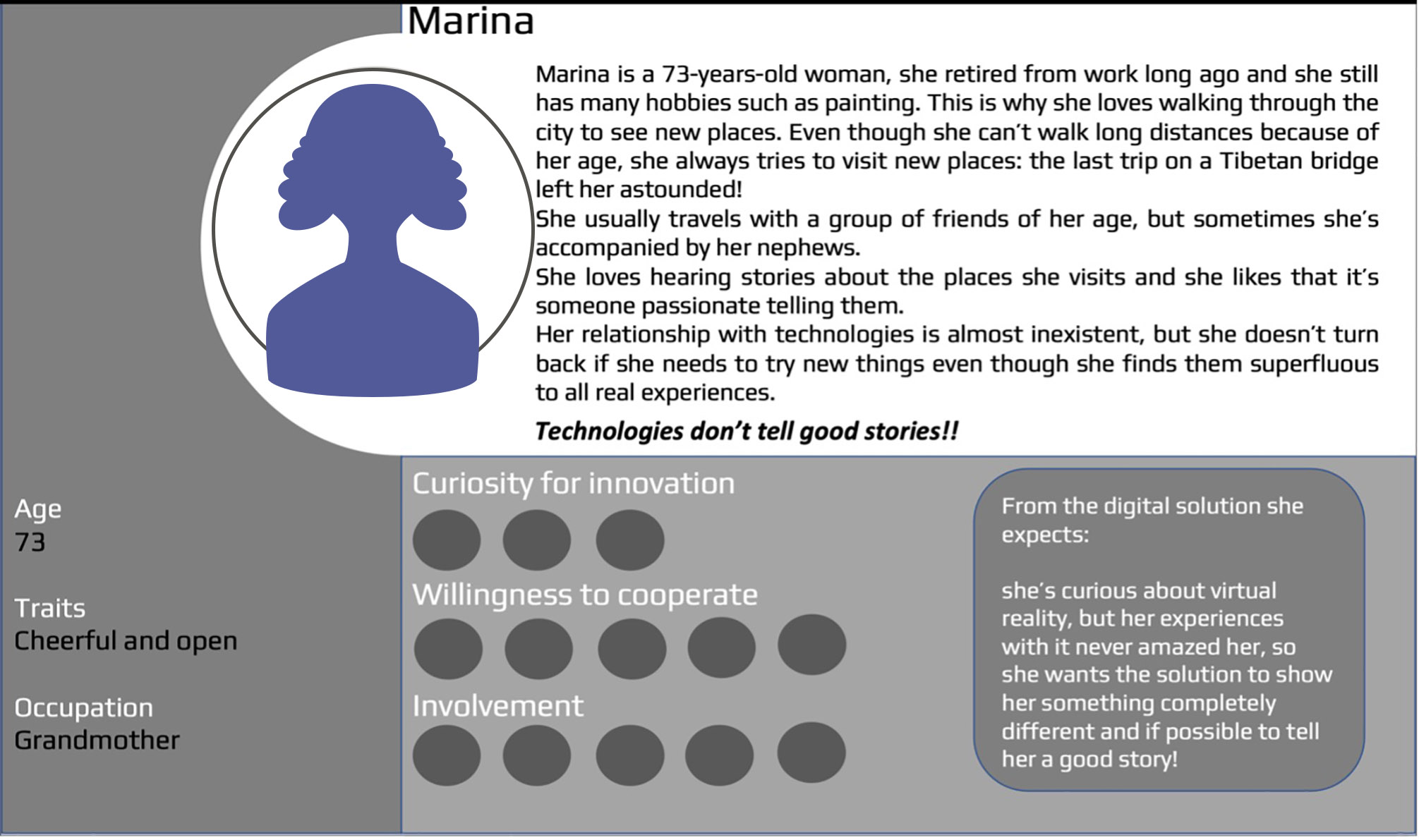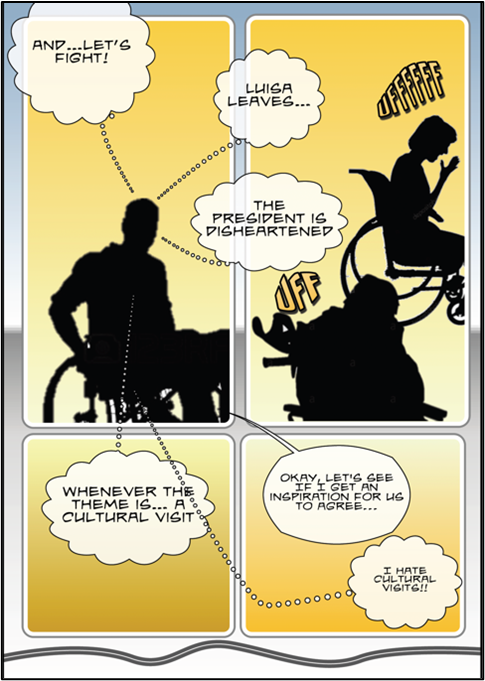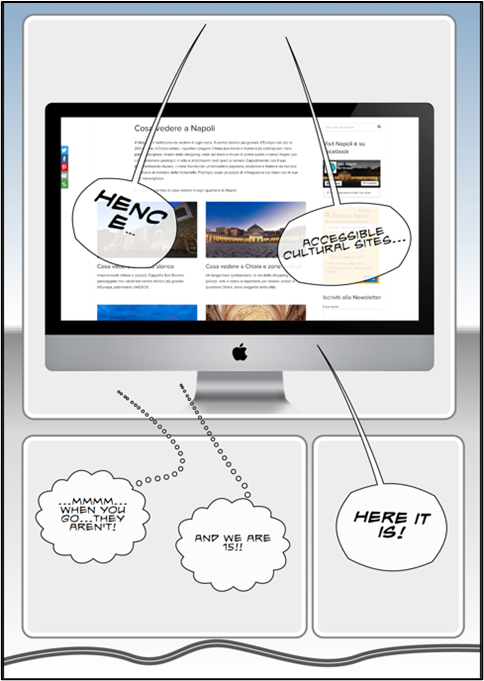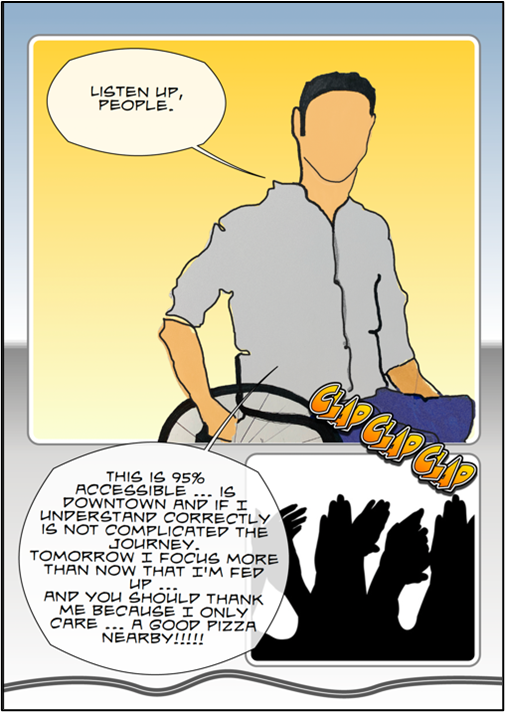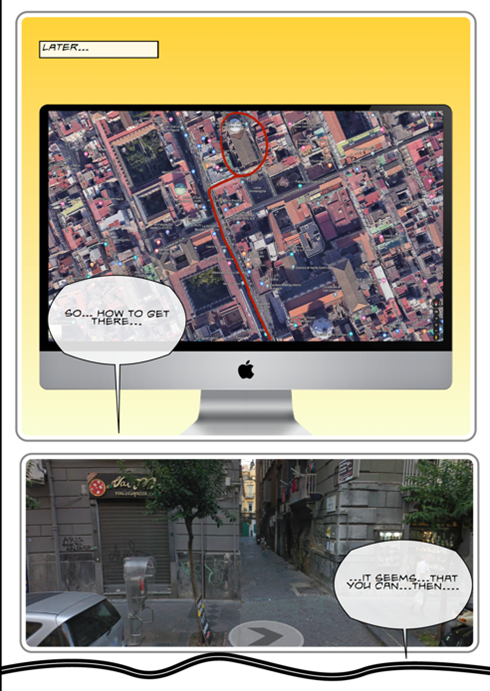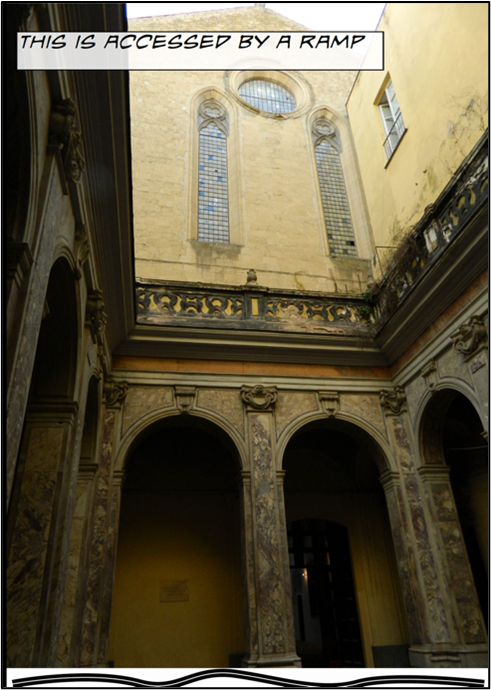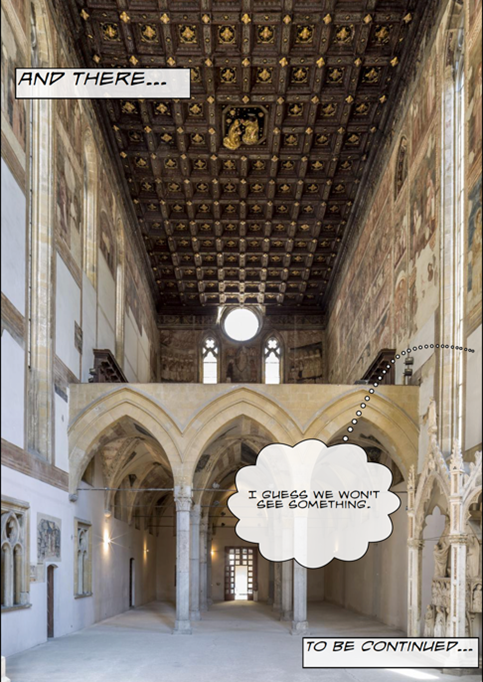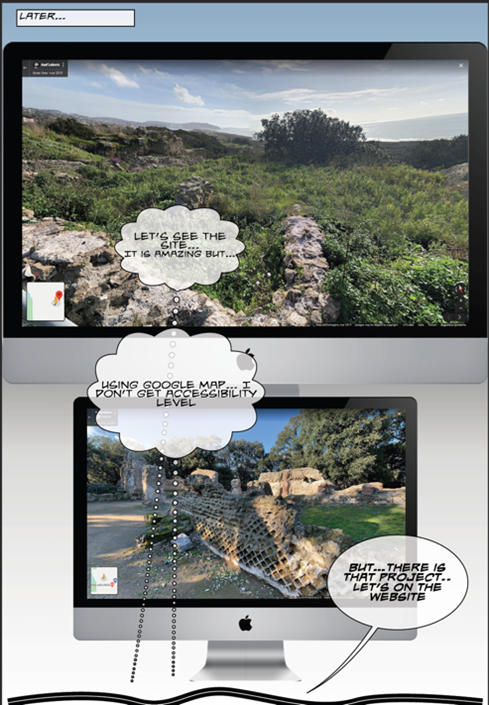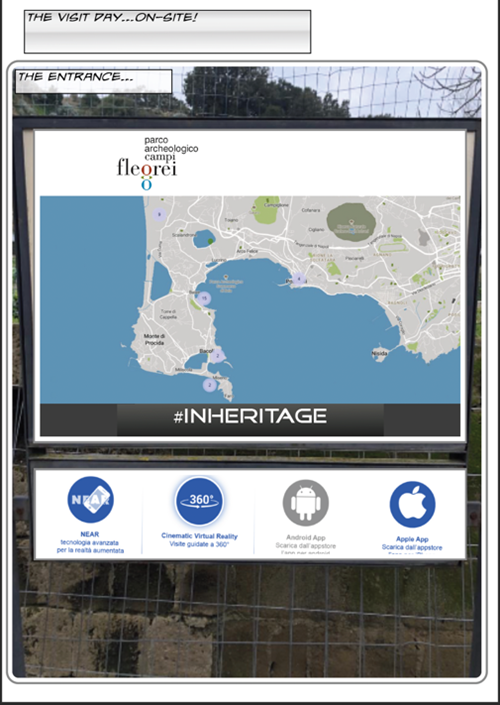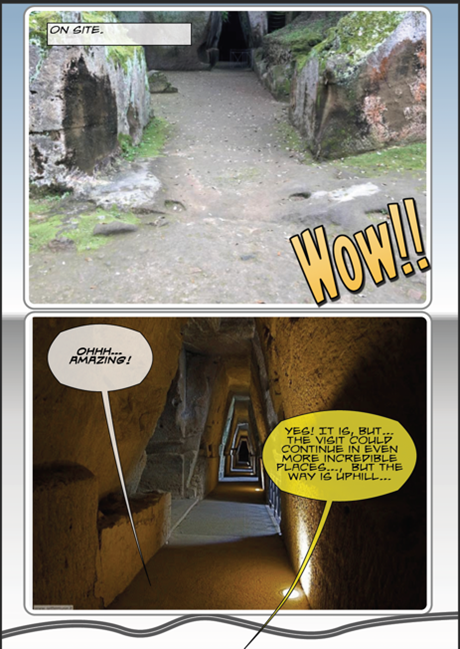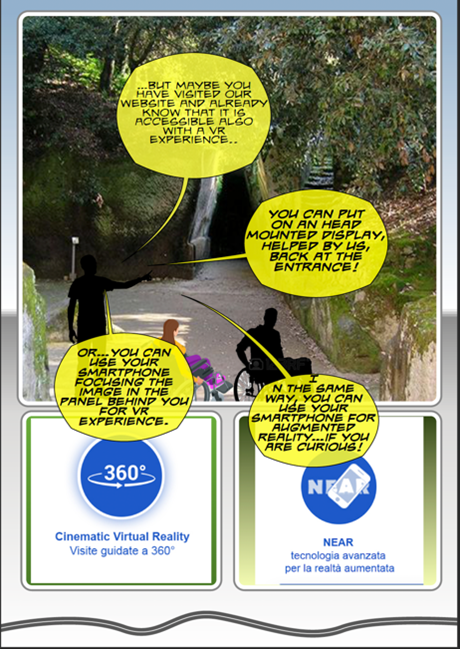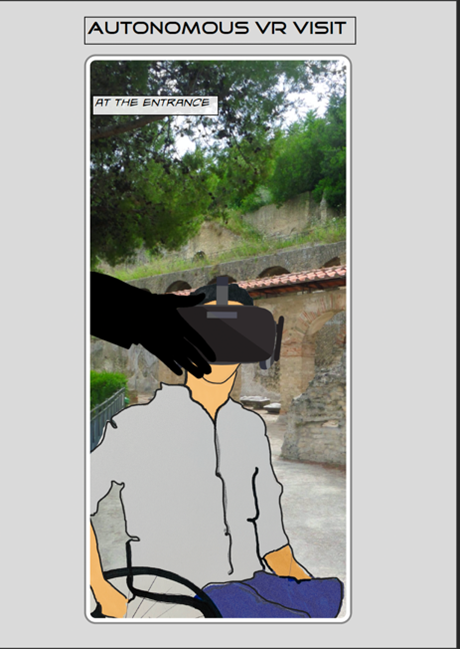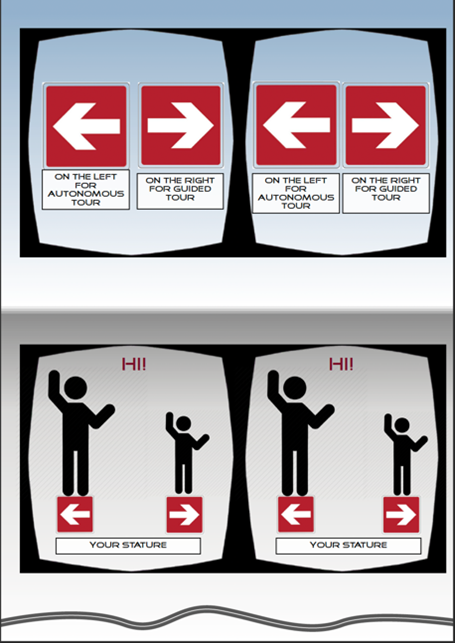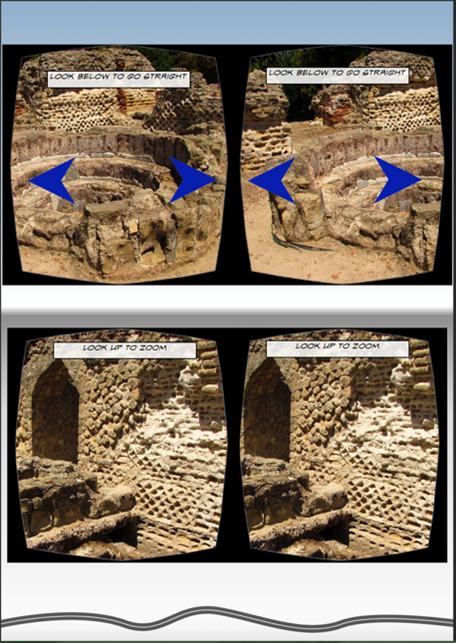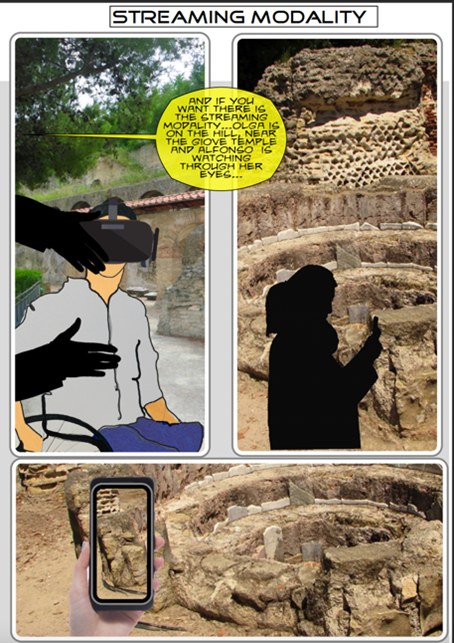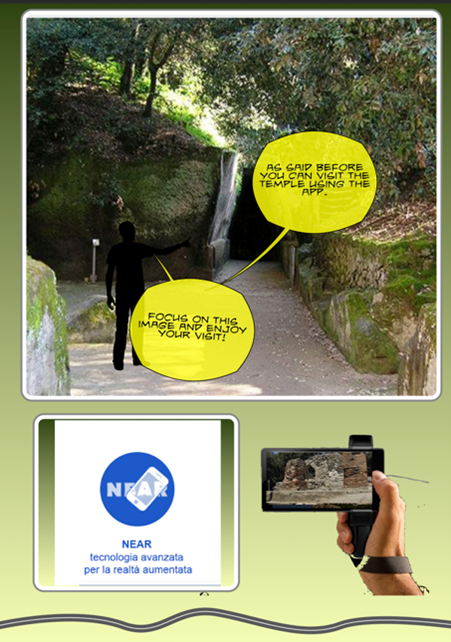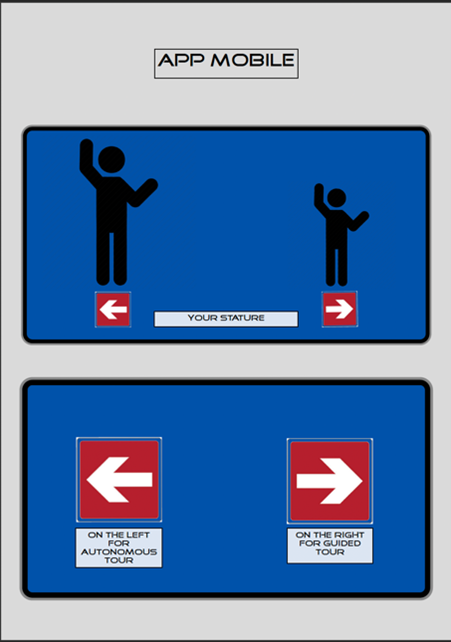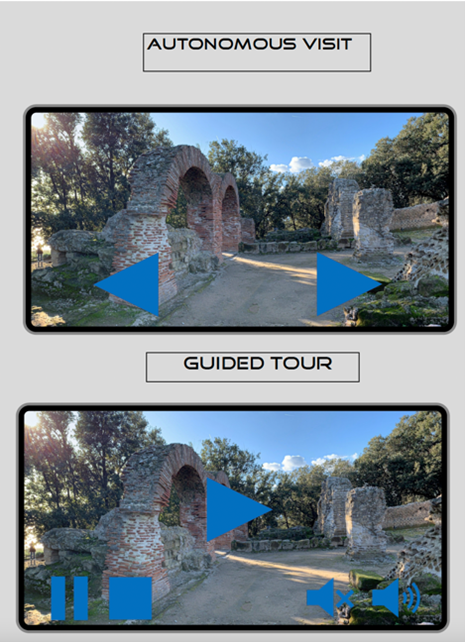Background
Research supports UCD as a preferred approach for the development of immersive solutions for cultural heritage ( ; ; ), in line with the principles of Design for All ( ; ) in the context of the pervasive use of ubiquitous computing to mediate and support cultural heritage experiences. This approach is also at the basis of design for user empowerment ( ), where users with disabilities are engaged in every stage of the design cycle.
Among the UCD methods, SBD ( ) is useful to engage users, designers and other stakeholders in collaborative design processes, as an effective bridge between designers and the end users ( ). It allows to visualize a case of use in a narrative (i.e., a storyboard) of a typical situation in which the end user interacts with the digital solution: this facilitates the user to imagine possible difficulties or advantages in using the digital application and designers to adequately consider the contextual and social factors for its sustainability. In this sense the scenario becomes a ‘design object’ ( ) that can be modified, enriched, extended in the co-designing activities in parallel to the technological implementation.
Described by Carrol ( ) as a method for envisaging and developing new technology-based systems for work or leisure, SBD is used in cooperative design and the application of ethnography for system design. Recently, it has been used in the design and development of new technological systems in different domains, including technology-enabled experiences of embodied computer games ( ). In these experiences, scenarios are effective tools for users, stakeholders and designers to visualize a real situation in interacting with technologies and SBD offers a significant and unique approach to address some of the most typical and difficult challenges in design. The possibility to represent a real situation with all the potential social and technical constraints and informed with needs, goals, activities and context is for both designers and users a great resource to understand the real application of a new digital solution. Together with scenarios, personas are the tools borrowed from UCD to make visible and personalized a typical situation. Personas, as fictional users that encapsulate distinct sets of behavior patterns ( ), are used in all the studies we refer to in the present project.
Recent research supports the use of SBD in design processes of digital solutions in tourism and cultural heritage. For instance, McCabe et al. ( ) use SBD to engage diverse city stakeholders in developing innovative, technology-based tourism services with scenarios. In the cultural heritage context, Hall and Bannon ( ) highlight the usefulness of SBD in the process for the creation of successful interactive museum exhibitions for children. The work by Ciasullo et al. ( ) supports the use of SBD as an effective methodology in the development of customized technologies to improve the experience for museum visitors from an interdisciplinary perspective. The study by Nigay et al. ( ) focuses on the domain of archaeology to improve the work of archaeologists considering two fundamental aspects: field studies and SBD. The SBD is used to get a concrete view of the current and future activities of the users. In this work, scenarios have proved to be very useful in the design of augmented reality (AR) systems. In particular, they allow to visualize how AR devices would affect the way professional users perform their individual and collective activities. In the work of Nigay et al. ( ) the method is organized into two steps: 1) design scenarios based on an analysis of the real task (explanation by the end-users of her/his relevant work phases, away from the work setting); 2) design scenarios based on an analysis of the activity (observation and video recording of the activity of the end-users on site).In this case, the SBD is a tool in the hand of designers to obtain a guide for the requirements of the AR solution in which the users are a fundamental part of scenario, but are not involved in an effective co-design process.
For the purpose of our research, the interesting issue is the identification of the functional advantages of scenarios in the design of interactive systems, including simplicity and accessibility for all actors involved in the design process; the possibility to share a common language in the design process; the enhancement of including various needs and extending creativity; and the real opportunity to develop the design solution at all stages from brief to release.
In relation to the accessibility of cultural heritage and the application of UCD principles therein, SBD is an appropriate approach to gain an in-depth understanding of the interaction of users with different accessibility needs to improve accessibility by digital solutions. In the study by Partarakis et al. ( ), the interaction of different users with digital solutions for exhibitions is represented through indicative scenarios. In this study, scenarios and personas are tools to better understand a typical situation where different skill levels are involved in the interaction with digital exhibits. The use of scenarios, in this case, is aimed to describe in a more practical way an ordinary situation at the museum in relation to different types of user needs. The purpose of the research is to focus on the elements that allow the visit to be enjoyable and satisfying. As in our case, with the premise that the provision of universally accessible multimodal solutions for cultural heritage is critical to providing equal access to cultural resources for all citizens including the elderly and people with disabilities, the authors highlighted with the help of designed scenarios the following Human-Computer Interaction (HCI) challenges to be addressed in order to achieve accessibility to cultural heritage:
-
new paradigms of interaction;
-
new forms of user interface adaptation;
-
new interaction techniques for accessibility, designed for everyone;
-
alternative means of displaying information;
-
mechanisms for personalized retrieval;
-
intelligent assistive solutions customized for all domains.
To address these requirements, they finally propose an architecture that integrates every component needed to solve the proposed issues.
Despite the fact that projects using SBD are on the rise, there is a lack of research focusing on the use of this approach to support the identification of the requirements for an effective interaction with a VR solution in the context of cultural heritage accessibility. Moreover, to the best of our knowledge, SBD has never been used as an actual co-design tool; most commonly, scenarios have been created for users’ evaluation to improve the proposed solutions. In our project, SBD is used as a tool in the hands of the end users in a co-design process aimed to develop a digital solution from a Design for All perspective. For the purpose of this research, the proposal by Yanagida et al. ( ), for a structured SBD method in HCI, focused on ubiquitous computing and represented in , is adopted as a reference.

Following this method, a persona, reassuming needs, values, values offered by business, is used as input information. In this work, the information is useful to develop three different scenarios, service, activity, and interaction to obtain the systems/product specifications. The scope of the proposal by Yanagida et al. ( ) is to provide a framework for the SBD allowing users’ intrinsic needs and values to be considered throughout every stage of the systems/products development, through the specification stage. The input requirements are users’ intrinsic needs and values and values offered by business identified by collecting user-related data such as questionnaires as a quantitative approach, or photo diaries, photo essays interviews, or observations as a qualitative approach. In order to develop a service scenario into an activity scenario and an interaction scenario, persona synthesized from data collected from users are used to help better articulate users’ behaviors and emotions in scenarios. As described in the next section, this approach was adapted to the present research to include users with different accessibility needs in the design process of a compensatory VR solution to support a visit to a partially accessible archaeological site.

